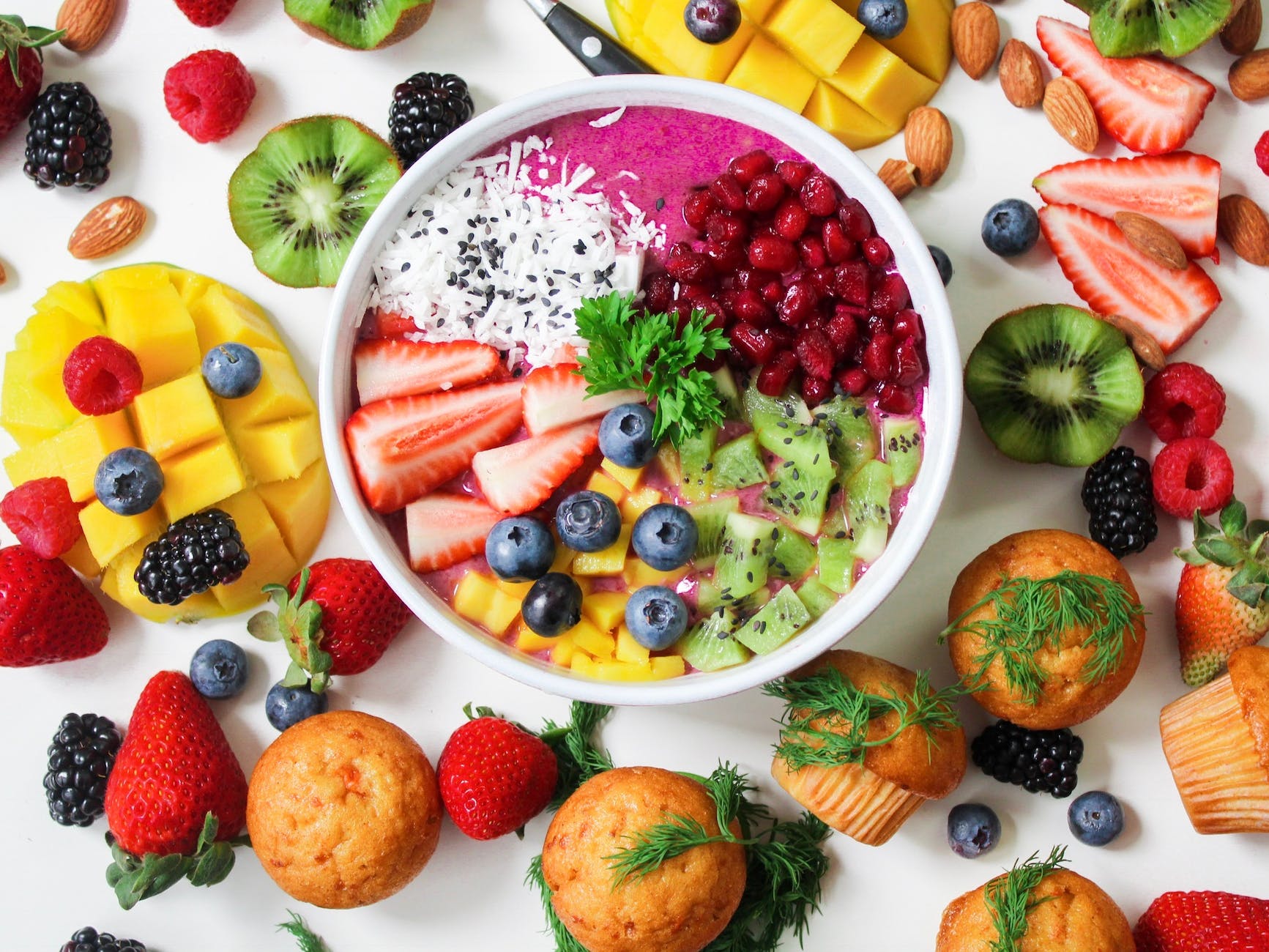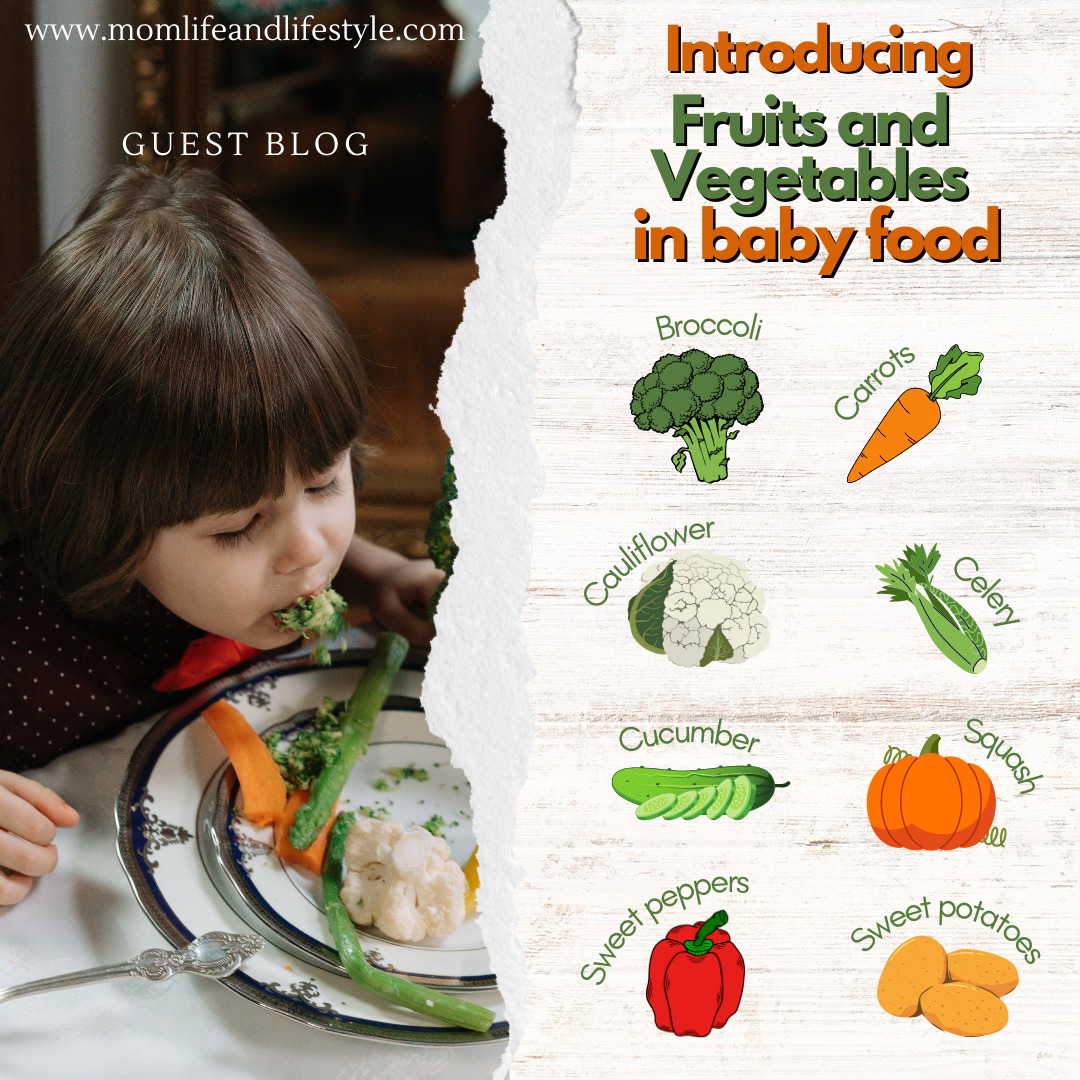Fruits and vegetables in baby food can be an exciting but challenging task for
parents. However, it is an essential step in ensuring their growth and development. Many
health organizations recommend starting to introduce these foods between 4 and 6 months of
age. Some babies may take longer, and it’s important to follow the baby’s lead.
Why are fruits and vegetables essential for babies?
Fruits and vegetables in baby food are the building blocks for a healthy diet by providing the required
nutrients to keep the baby’s body and mind healthy. They have essential macronutrients,
vitamins, minerals, and fibre, which can help reduce the onset of health issues like obesity,
diabetes, heart disease, and certain types of cancers. They can also be a great source of
hydration for your little ones on hot summer days.
Fruits and vegetables in baby food not only nourish the baby’s body but also affect their immunity in a big
way. They give the body antioxidants that fight outside invaders and improve the body’s
defiance against sickness.

When should you start fruits and vegetables in baby food?
Pediatrician’s recommend introducing babies to fruits and vegetables at around six months of
age. By the time your baby is ready for solid food, it will have developed the necessary
digestive enzymes to break down complex fruits and vegetables.
And, how do you know that it is the right time to start solid foods? Here are some signs that
babies are ready:
- They have good head and neck control and sit up in a high chair.
- They’re interested in food. For example, they may watch others eat, reach for food,
- and open their mouths when food approaches.
- They don’t push food out of their mouths, which is a natural tongue reflex that
- disappears when they’re between 4–6 months old.
- They weigh twice their birth weight, or close to it.
How to prepare fruits and vegetables so that they can be given to babies?
When introducing fruits and vegetables to your baby, it’s important to ensure that they are
prepared in a way that is easy to digest and appropriate for their age. Start by choosing fresh,
in-season produce that is preferably organic to avoid exposure to harmful chemicals. For
younger babies who are just starting solids, the fruit or vegetable should be pureed or mashed
to remove any chunks or chunks that could be a choking hazard.
As your baby grows older and begins to develop teeth and better chewing skills, you can start
introducing finely chopped fruits and vegetables that are soft enough to chew but still offer
some texture. Some excellent choices for first or early foods include avocado, sweet potato,
carrot, banana, pear, and apple. It’s also important to wash all fruits and vegetables
thoroughly to ensure that any dirt and bacteria are removed before consumption. Lastly,
always supervise your baby when they are eating and be mindful of any signs of allergies or
reactions. With a bit of preparation and attention, introducing fruits and vegetables to your
baby can be a safe and nutritious experience.

You can also read: Cook new food and tips to make your child eat
What fruits and vegetables in baby food should we start with?
The freshest, preservative-free baby food on the market is Mother Nurture’s baby foods. They
offer a fabulous range of fruits and vegetables. You can introduce foods like bananas, apples,
pears, and sweet potatoes in a semi-liquid form, allowing for easy digestion.
As your baby’s palate and digestive system expand, you can gradually move on to foods like
green beans, carrots, peas, and doodhi (bottle gourd).
Tips for introducing fruits and vegetables:
- Introduce one type of fruit or veggie at a time, waiting 3-4 days before introducing a
- new food.
- Prepare the fruits and vegetables in a way that is safe for babies by boiling, steaming,
- or baking.
- Use a vegetable masher or blender to get them to a consistency that your baby can
- handle easily.
- Be prepared for some refusal initially. It is recommended to start with small quantities
- and gradually increase quantities, so your little ones don’t get overwhelmed by the
- new taste and texture.
Related post: Appetite Ups and Downs for Toddlers
Mother Nurture’s Baby Foods
Every mother knows that the best first foods for their baby are home-cooked fresh meals that
are rich in nutrients and filled with a mother’s love. But sometimes, one has to rely on the
next best thing, when time and other constraints come in the way of freshly cooked home
meals. And that’s where Mother Nurture’s nutrient-rich, preservative-free and clean-label
baby foods come into the picture.
If you are trying to introduce fruits and vegetables into your baby’s diet, try Mother Nurture’s
age-appropriate baby foods categorized in 3 stages or categories. Mother Nurture used real
fruits and vegetables sources locally and from countries such as South Africa, Canada &
United States. The freshest of ingredients are sourced and used in their ripest forms, ensuring
that maximum nutrients are retained in these ready-to-eat foods.
Visit mothernurture.in to know more about these preservative-free, taste-tested and nutrient-
rich baby foods that give mothers the gift of guilt-free convenience.
In conclusion, introducing fruits and vegetables in baby food is an important step towards
their overall health and well-being. Start slow and explore the many different varieties of
fruits and vegetables available to you. And remember, Mother Nurture’s preservative-free
baby foods offer a delicious and nutritious way to introduce these essential foods to your little
ones.
— This is an ad and a guest post by Sayali, a blogger/digital creator.

